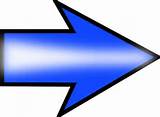Brookes's APL was modelled on a similar organisation,
the American Protective League, that had been formed in
the United States some time earlier to combat wartime
disloyalty (especially among the large German immigrant-population)
and also militant unionism, particularly that then associated
with the Industrial Workers of the World, the IWW, or
"Wobblies".
In 1918 Brookes, probably alerted to the existence of
the American Protective League by Australia's trade representative
in the United States, Sir Henry Braddon, dispatched a
representative from Melbourne to the Chicago headquarters
of the League to obtain information about its structure
and operations (cf. Joan Jensen's The Price of Vigilance
[Rand McNally, Chicago, 1968], which confirms [p.234]
that the APL "model" was exported to Australia).
(After the war, the American Protective League - whose
nickname was "The Web" - morphed into the FBI,
under J Edgar Hoover. Initially it was a semi-secret division
of the Investigation Branch of the U.S. Attorney-General's
Department - an informal "arrangement" that
was also followed in Australia.)
When the war ended, the need for Brookes's government-backed
Australian Protective League was also over. Its "official"
existence had been very brief. In fact, as can be seen
from the "Rough Note" below, the formation of
the APL was approved on October 28, 1918 - precisely 14
days before the war ended. Little wonder that later historians
"missed it".
Nevertheless, throughout the immediate post-war period
there were, around the world, numerous "red scares".
The working-class was on the rise, and getting "bolshy".
At this time in Australia, the union movement, of which
the Labor Party was the political wing, was particularly
militant. A local Communist Party had been formed in Sydney
in 1921, headed by a pro-IWW unionist, "Jock"
Garden (who was to later play more than a walk-on role
in Kangaroo).
Brookes's partially-organised Australian Protective League
was not disbanded at the end of the war, but "stood
down", ready to be re-activated if any new "threat"
emerged from Irish-Catholic "disloyalty" and
the increasingly-militant union movement.
(The actual phrase its leadership used was "banked
its fires" - ie, a bank or some other barrier would
be erected behind which its fires could be kept burning,
yet remain unseen by "the enemy".)
It was re-activated in July 1920, following the election
of the Storey-Dooley Labor Government in NSW, when Scott
and Rosenthal started organising their King and Empire
Alliance, and recruiting its secret para-military auxiliary
- Lawrence's "Maggie" squads.
